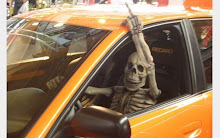Great guitar tone is something that every guitarist wants. The quest for tone is one of the biggest reasons guitar players drop so much money on amplifiers and effects.
If you've found yourself spending a lot of money lately on various 'sound tweaking' gadgets, take note: the solution to your sound problems just might be closer (and cheaper) than you think!
Whether you want killer distortion or country-twang, the secret of great tone begins with a pure, clean signal.
In other words, no matter how many effects you intend to use, you've got to make sure the basic, unadulterated “dry signal” coming through your amp sounds just as good as anything else.
The reason for this is simple: every effect you add to that signal brings in a little bit of noise. So, you need to start with as clean a signal as possible so that the cumulative impact of noise and signal degradation from your effects is kept to a minimum.
The first step here is as easy as proper maintenance of your guitar. Not only do you need to keep your strings fresh, and your neck in alignment, you also need to eliminate any sources of buzz or hum coming from faulty cords or poor electrical wiring in your pickups or input jack.
The second step is to run the same maintenance check on your amplifier. Now, the fact is, some amps are just noisier than others. If you can find nothing physically wrong with your amp, it may just be that you need to do upgrades for better tone.
For example, your amp's factory-installed speakers are probably not top-of-the-line. In the case of tube amps, especially, this can make a HUGE difference.
Along similar lines, you might also consider upgrading your tubes and/or the transistors used in the pre-amp stage.
Why?
Because your amp's sound is greatly influenced by the way each of these components responds to the guitar signal. Cheap parts have a slower dynamic response, and can also add unwanted coloration to the signal. This is one reason why some amps will sound great at a lower volume, but start to break up and distort as soon as you turn things up.
Last, but not least, take a look at the effects pedals you currently have in your arsenal. Maybe you've purchased 2 or 3 different distortion pedals, for example, in an elusive quest for that perfect 'crunch'?
There's nothing wrong with owning multiple pedals for the same type of effect; but, if you still aren't getting the sound you desire, it could be that you need to add something very basic into the mix, like an EQ pedal.
A good EQ pedal will allow you to shape which frequencies are emphasized. You can, for example, cut the mid-range for a heavier tone, or boost the highs so that your treble notes punch through.
Try mixing and matching EQ and Volume pedals in different places along your effects chain in order to boost or limit the characteristics of other effects. You'll be amazed how many different sounds you can create with a little experimentation!
Tuesday, September 11, 2007
Simple step to better guitar tone
Posted by Blukor at 1:05 AM
Subscribe to:
Post Comments (Atom)


0 comments:
Post a Comment